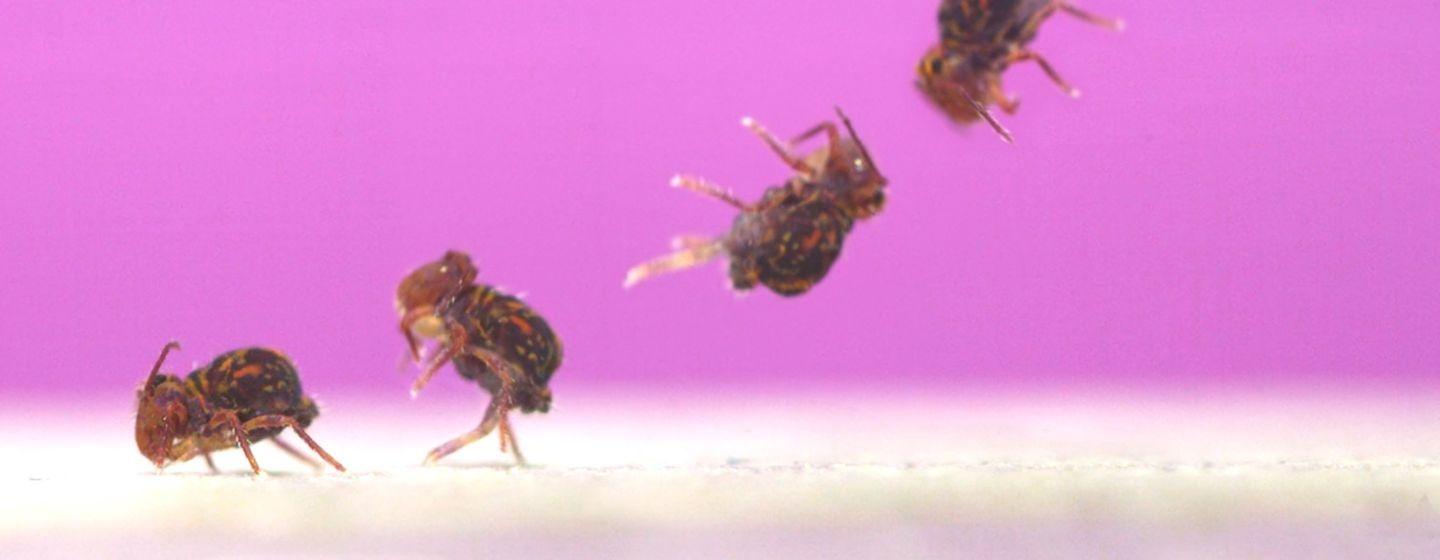The Fastest Backflips on Earth


You were probably amazed by the gymnasts at the Summer Olympics in Paris but as the saying goes, you ain’t seen nothing yet. A tiny backyard bug can top any of the acrobatics performed at Bercy Arena.
Globular springtails can do amazing backflips in the air, spinning and jumping to over 60 times its body height in less than a second. And there’s a good reason. Globular springtails don’t fly, bite or sting.
Jumping is their go-to plan (actually their only plan) for avoiding predators.
“When globular springtails jump, they don’t just leap up and down, they flip through the air—it’s the closest you can get to a Sonic the Hedgehog jump in real life,” said Adrian Smith in an NC State press release. Smith is a research assistant professor of biology at NC State and head of the evolutionary biology and behavior research lab at the North Carolina Museum of Natural Sciences in Raleigh.
Smith also shares his amazing high-speed insect footage as a regular contributor to Sci NC and on his YouTube channel.
Here’s the problem. A globular springtail is so good at jumping that to the naked eye it seems to disappear.
Which means, of course, you must record those jumps to count them.
It turns out that finding globular springtails is easy. These insects are all around us. Smith found his subjects in leaf litter in his backyard. The insects for this study are usually out from December through March.
Recording the jumps was more challenging.
“Globular springtails jump so fast that you can’t see it in real time,” said Smith. “If you try to film the jump with a regular camera, the springtail will appear in one frame, then vanish. When you look at the picture closely, you can see the faint vapor trail curlicues left behind where it flipped through the one frame.”
Smith solved the problem by using cameras that shoot 40,000 frames per second. He got the springtails to jump by prodding them with a paintbrush. He then looked at how they took off, how fast and far they went, how they landed and how many times they flipped.
While most of us think legs are needed for jumping, globular springtails use an appendage called a furca that folds up underneath their abdomen. The furca also has a forked tip. When springtails jump, the furca flips down, the forked tip pushes against the ground and launches the insect into its backflips.
“It only takes a globular springtail one thousandth of a second to backflip off the ground and they can reach a speed of 368 rotations per second,” adds Smith. “No other animal on earth does a backflip faster.”
The springtails also launched themselves more than 60 millimeters into the air, which is more than 60 times their height.
Oh yes, they mostly went backwards. The researchers believe that their inability to jump forward is a sign that jumping is primarily a means to escape being eaten or some other danger rather than a way to get around.
Here’s the irony. For all that jumping ability, their landings are sometimes shaky. Smith’s high-speed photography captured springtails using a sticky forked tube they can push out of the bodies to grab a surface and stop their movement. But Smith found that bouncing and tumbling to a stop (you could say crashing) was just as common.
“This is the first time anyone has done a complete description of the globular springtail’s jumping performance measures, and what they do is almost impossibly spectacular,” said Smith.
NC State’s findings on the jumping performance and behavior of globular springtails appear in the journal Integrative Organismal Biology.
To see globular springtails in action, watch this video on Dr. Adrian Smith's YouTube channel.
This video summarizes some of that work and shows all of the ways we filmed and visualized all the components of their jumps. The globular species we researched is Dicyrtomina minuta.
Here are the peer-reviewed research papers that are featured in this video: